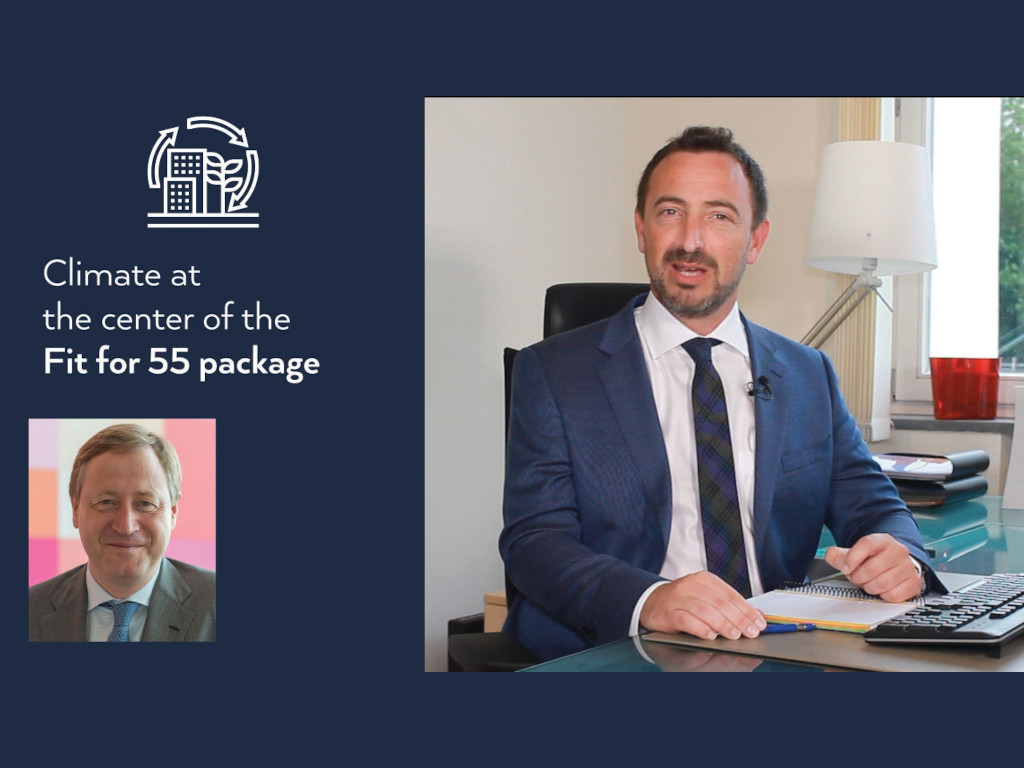On 14 July 2021, the European Commission revealed its strategy to reduce its emissions by 55% in the next decade and make Europe the first climate neutral continent by 2050. “With the release of the so-called ‘Fit for 55’ package, the European Commission does not fall short of its ambition” says Bertrand Cazes, Secretary General of Glass for Europe. “This is a turning point and a remarkable moment for a sector like the flat glass industry.”
The Fit for 55 package contains more than a dozen inter-twined legislative proposals. The European Commission aims to update several pieces of its Energy and Climate legislative framework to align the requirements to the increased climate ambition of the Union. New initiatives have been put on the table to secure contributions to the CO2 emissions reduction goal from sectors such as buildings and transport. Glass for Europe is particularly supportive of measures which have the potential to support the market uptake of CO2 avoiding products, such as initiatives to boost energy efficiency and renewables in both buildings and transport.
Renovating with glass
Philippe Bastien, President of Glass for Europe and Regional President of AGC Glass Europe, explains: “In the journey toward climate-neutrality, high-tech glazing will play a crucial role to renovate ageing buildings, to support the clean mobility transition and to increase the share of solar energy. In Europe’s flat glass sector, we stand ready to make this essential material available while developing novel ways to lower our own industrial emissions”.
The release of the Fit for 55 package is the first step of a long legislative process which could take up to two years. In the coming months, both the European Council and the Parliament will have their say and intense negotiations will take place before the final agreement. “While a clear political direction is provided with this package,” continues Bertrand Cazes, “some fine-tuning will be needed to make sure this framework supports our industry’s efforts to reduce its manufacturing emissions.” Glass for Europe will be active to make sure that the Fit for 55 legislative package does trigger a virtuous decarbonisation cycle for the European flat glass industry.
“Glass for Europe will work in the coming months to make sure today’s legislative package does trigger a virtuous decarbonisation cycle,” concluded Glass for Europe’s President, Mr Philippe Bastien.
Review of the Emissions Trading System
The EU’s Emissions Trading System (ETS) is the world biggest carbon market and covers both the power sector and manufacturing industry. Under the EU ETS, flat glass companies are required to buy carbon emissions permits for their installations. In order to further increase the price of carbon, the European Commission has proposed to lower the emission cap and increase its annual rate of reduction.
Glass for Europe believes that new proposals may need improvement to ensure that frontrunners like the flat glass industry are not penalised and that sectors at the risk of carbon leakage are thoroughly protected.
Residential and transport decarbonisation
This is probably going to be one of the most controversial proposal included in the Fit for 55 package. The Commission intends to create a new, separate ETS to decarbonise the residential and transport sector. In practice, fuel suppliers of domestic heating and combustion cars will have to pay a price for the carbon emissions of their products.
Glass for Europe calls on extreme vigilance with regards to the extension of the EU ETS to buildings. While it may generate funds for building renovation, citizens’ buy-in for the measure should remain a pre-requisite.
Energy efficiency in buildings
In addition to the new ETS for building, other pieces of the legislative puzzle under review are targeting the building sector, which is by far the market of reference for the flat glass products. In its proposal, the European Commission set a more ambitious energy efficiency target that could drive the energy renovation of the European building stock and demanded national governments to lead the way. Member States are in fact asked to renovate annually 3% of the floor area of all public buildings, including healthcare, education and public housing and to consider energy efficiency solutions in policy and investment decisions in energy systems and non-energy sectors (i.e. buildings).
Glass for Europe welcome the proposal to increase the energy efficiency target and to make it binding at EU level. It also supports the creation of a fund potentially available for building renovation through instruments, such as the EU Emission Trading Scheme and the New Social Climate Fund.


